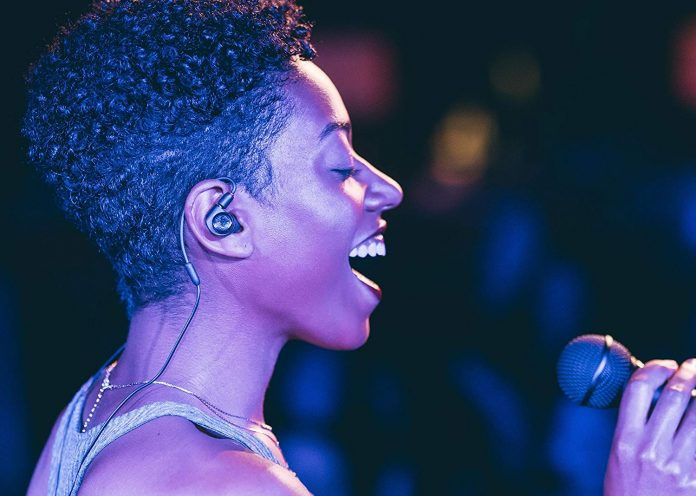How To Set Up In Ear Monitors: A Remarkable Guide Here?
If you're a professional photographer venturing into the realm of sound equipment, understanding how to set up in ear monitors will open new avenues for your work. Whether you're shooting a live concert, capturing a documentary, or working on a project requiring audio clarity, in ear monitors (IEMs) can dramatically elevate your experience. This article delves into the essential steps, tips, and tricks on setting up these remarkable devices for optimal performance.

What Are In Ear Monitors?
In ear monitors are audio devices listening aids used primarily by musicians and sound engineers to hear the audio mix of their performance. However, photographers can also benefit immensely from using IEMs during video shoots or capturing events that involve sound. They provide clear audio feedback while isolating outside noise, making it a tremendous asset in a noisy environment.
The basic components of in ear monitors include the driver, housing, and the cable. Let's take a closer look at what in ear monitors are.

Why Do Professional Photographers Need In Ear Monitors?
Professional photographers often find themselves in environments bustling with activity and noise. While capturing moments behind the lens, keeping track of sound can be pivotal. Here are some life-changing reasons why you should consider using IEMs:
- Immediate Feedback: When shooting video or during a live event, IEMs provide real-time audio feedback. This can ensure perfect synchronization between sound and visual elements.
- Noise Isolation: They block external noise, making it easier to focus on taking astonishing photos without distraction.
- Creative Control: Photographers can mix their audio sources, allowing for better control of the sound in context with their visuals.

Types of In Ear Monitors to Consider
Before diving into the setup, it's crucial to know the different types of in ear monitors available:
- Single Driver: These are the most basic and economical IEMs, making them a terrific option for beginners.
- Multiple Driver: These IEMs produce a wider frequency range and richer sound, suitable for professionals who demand quality.
- Custom-Fit IEMs: Tailored to fit your ear shape, these provide superior comfort and outstanding sound quality.

Setup Your In Ear Monitors: Step-By-Step Guide
Now that you understand the significance of IEMs, let's explore how to set up in ear monitors effectively:
Step 1: Gather Required Equipment
Your setup will typically require:
- In ear monitors
- Audio mixer or interface
- Wireless transmitter and receiver (if applicable)
- Cables and adapters
Step 2: Connect Your IEMs To Your Mixer
Start by plugging your IEMs into the output of your audio mixer. If you're using a wireless system, connect the transmitter to the mixer first.
Step 3: Adjust The Mix
Before proceeding to shoot, adjust the monitoring levels of various sound sources. Make sure to isolate the sound you need to focus on while eliminating any unwanted background noise.
Step 4: Test The Audio
Before your actual shoot, conduct a thorough test of the audio. Walk through the sound range and ensure clarity across all frequencies. Careful testing is essential to avoid any unpleasant experiences during a shoot.
Step 5: Fine-Tune Your Setup
Don't hesitate to adjust your mix during the shoot as per situational needs. You may find the need to amplify or lower certain elements, which will allow you to capture the essence of your project effectively.
Tips For Getting The Best Performance From Your IEMs
To ensure you get the most out of your in ear monitors:
- Keep Your IEMs Clean: Regularly clean the ear tips to maintain sound quality.
- Choose The Right Fit: Always use the ear tips that provide a comfortable yet snug fit, as this greatly impacts audio quality.
- Monitor The Levels: Continuously monitor your audio levels to make sure everything sounds balanced and clear.
Conclusion
Knowing how to set up in ear monitors is crucial for any professional photographer aiming to improve their craft. With improved audio monitoring capabilities, you can create stunning visuals accompanied by high-quality sound. This remarkable technology is undeniably a fortified tool that enhances your beer beer steel photography portfolio.
For further tips and information about IEMs, don't forget to check out this Wikipedia article.
Frequently Asked Questions (FAQ)
-
Question 1: Can in ear monitors be used for live events?
Answer: Absolutely. IEMs provide optimal sound feedback, which is essential for live performances. -
Question 2: Are in ear monitors worth the investment?
Answer: Yes, especially for professional photographers working in audio-visual projects. -
Question 3: How do I maintain my in ear monitors?
Answer: Regularly clean them and store them properly to prolong their lifespan.
As an Amazon Associate, I earn from qualifying purchases.

